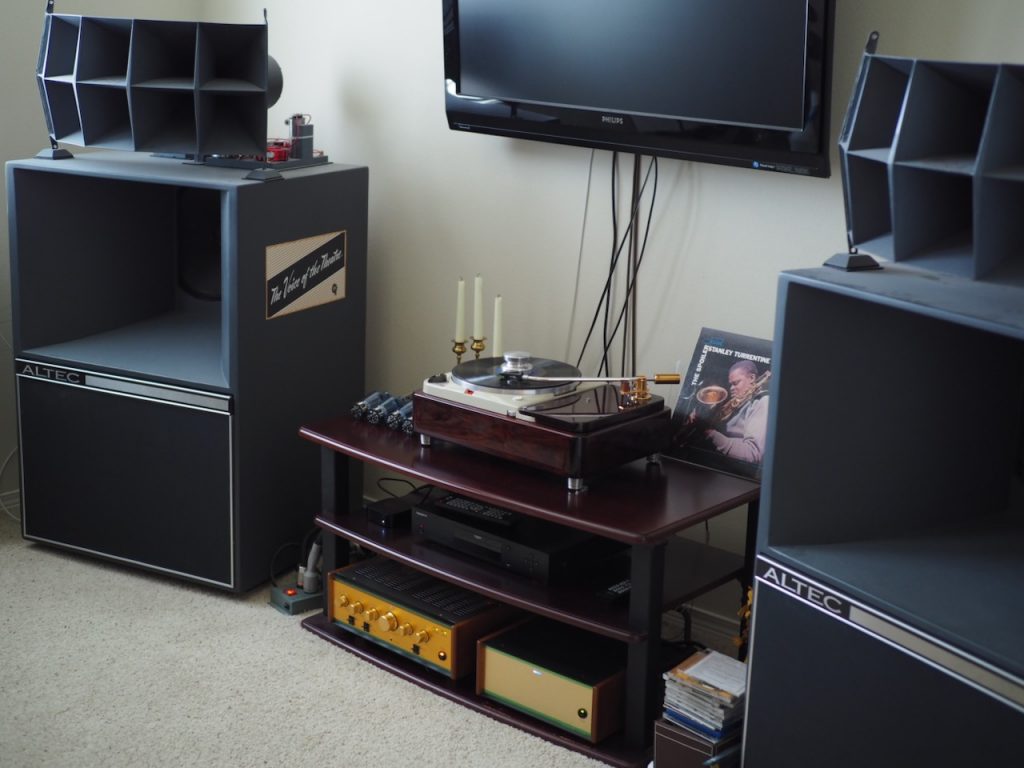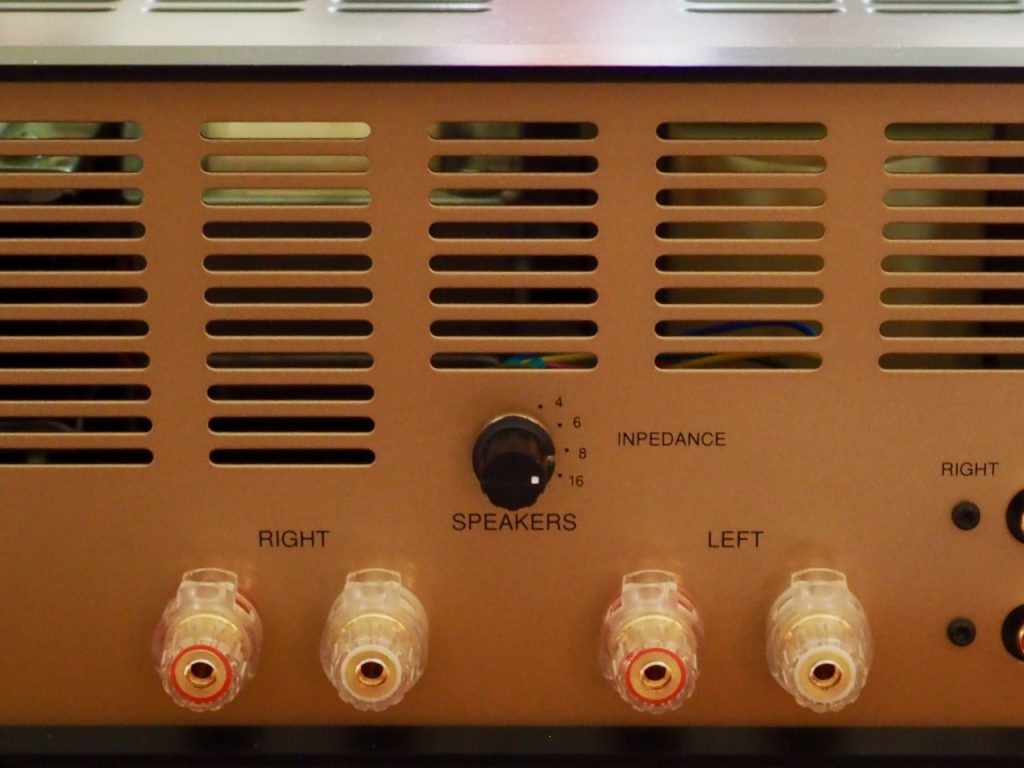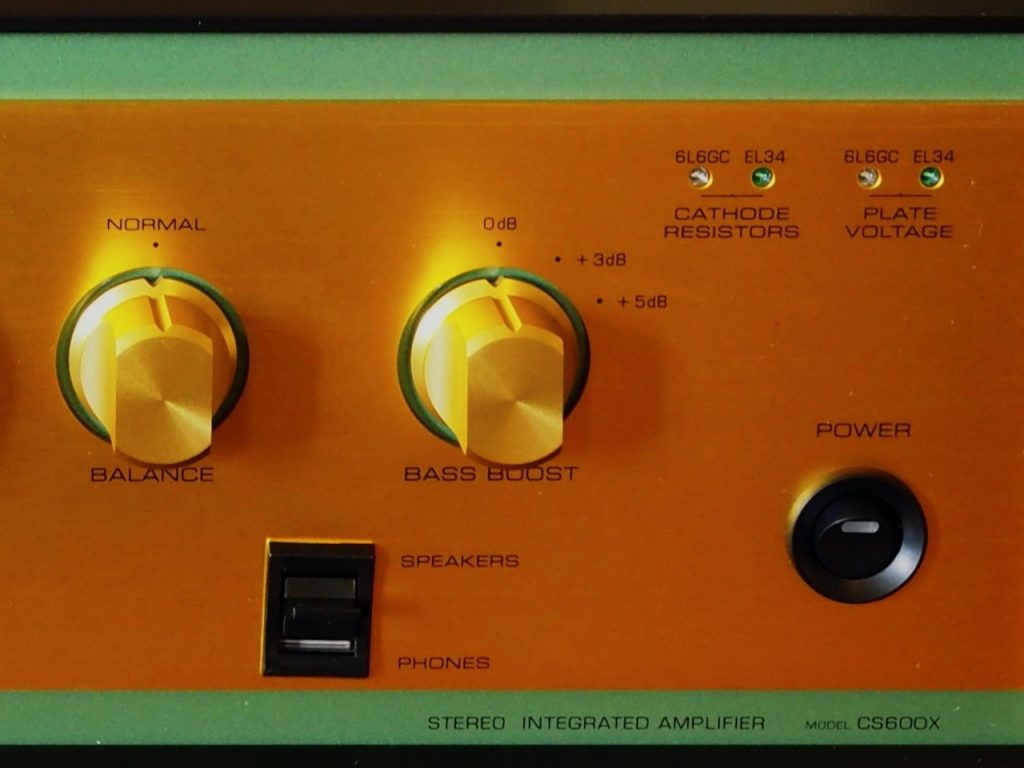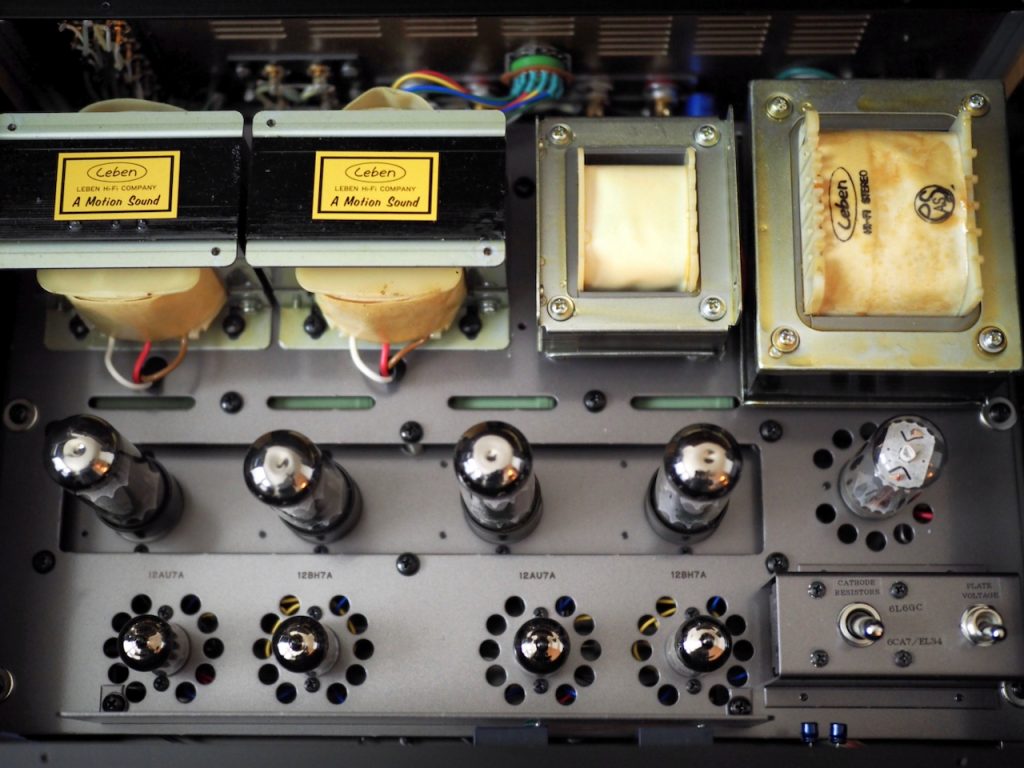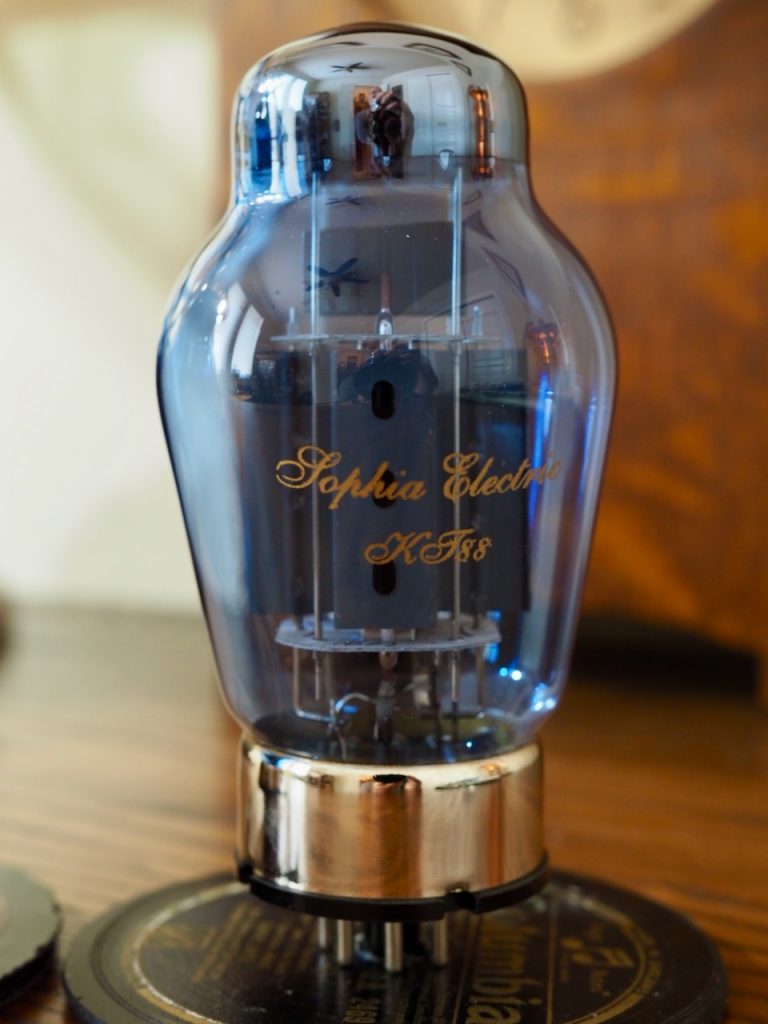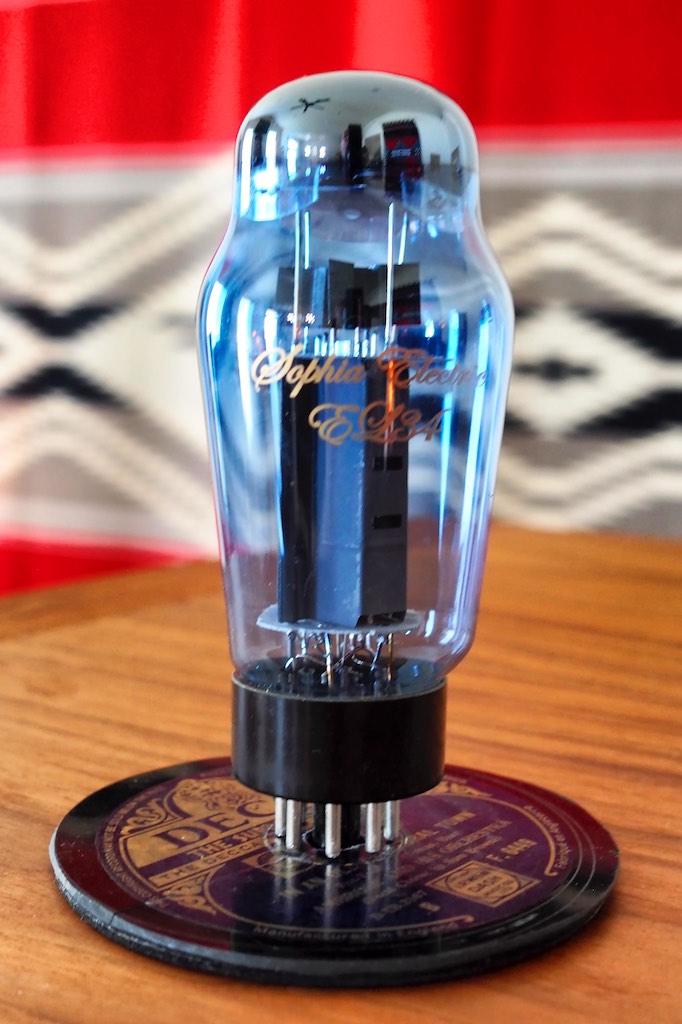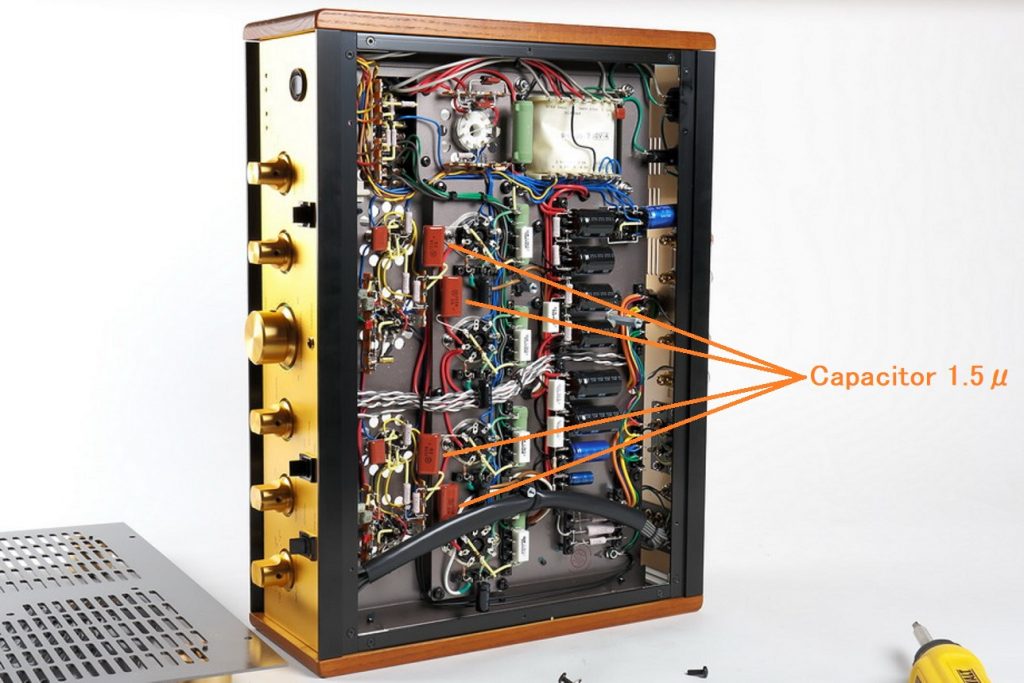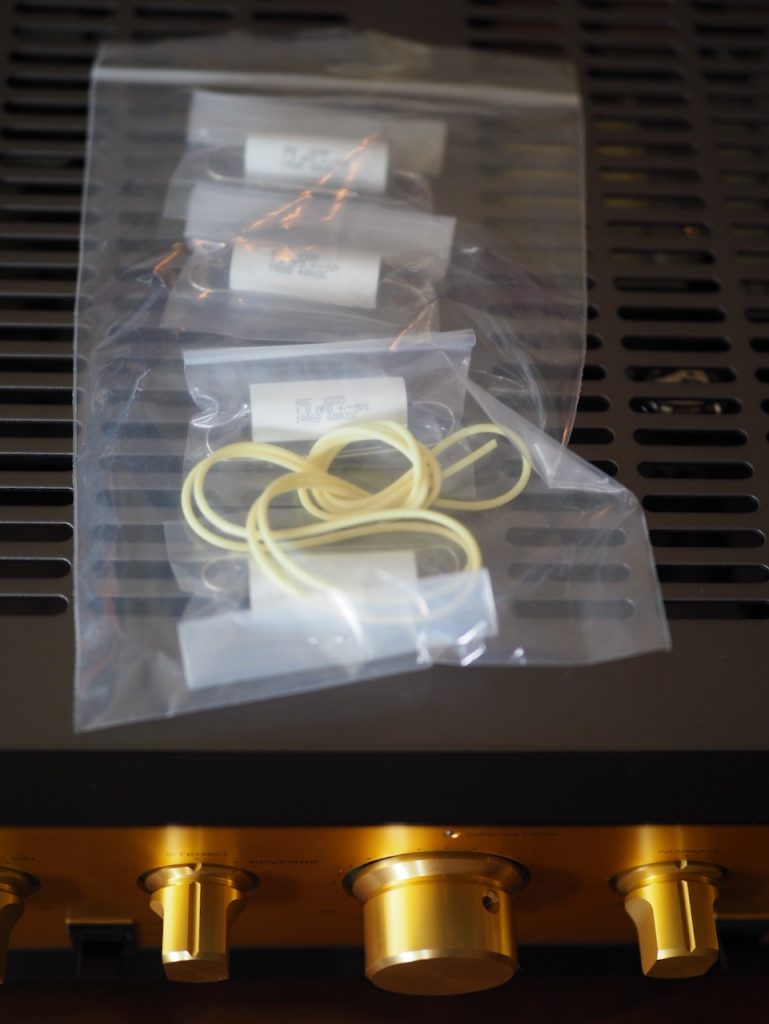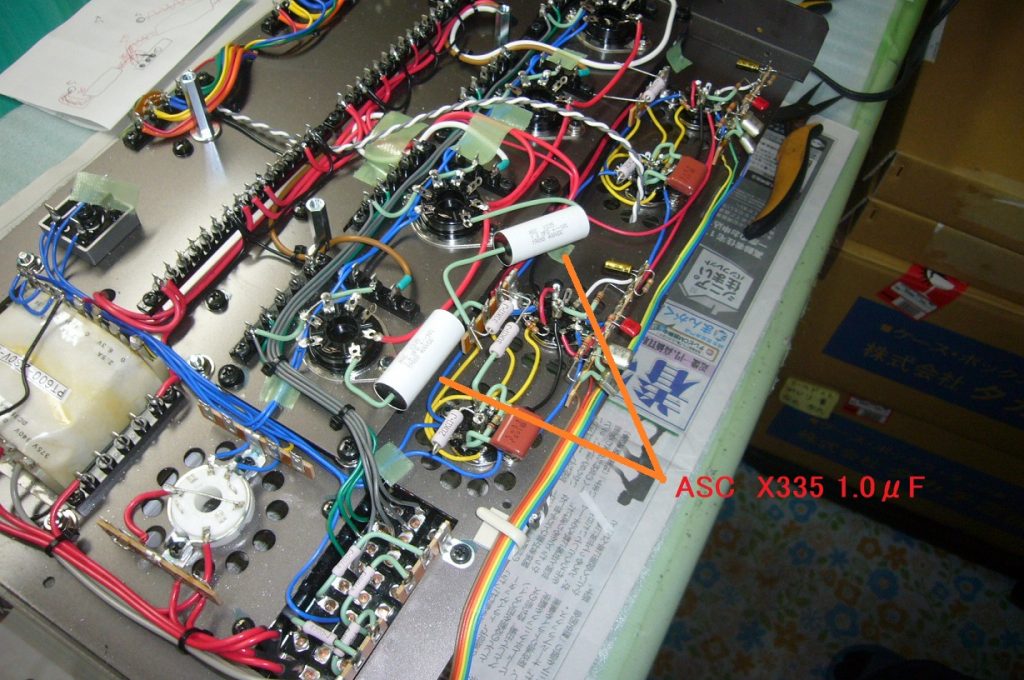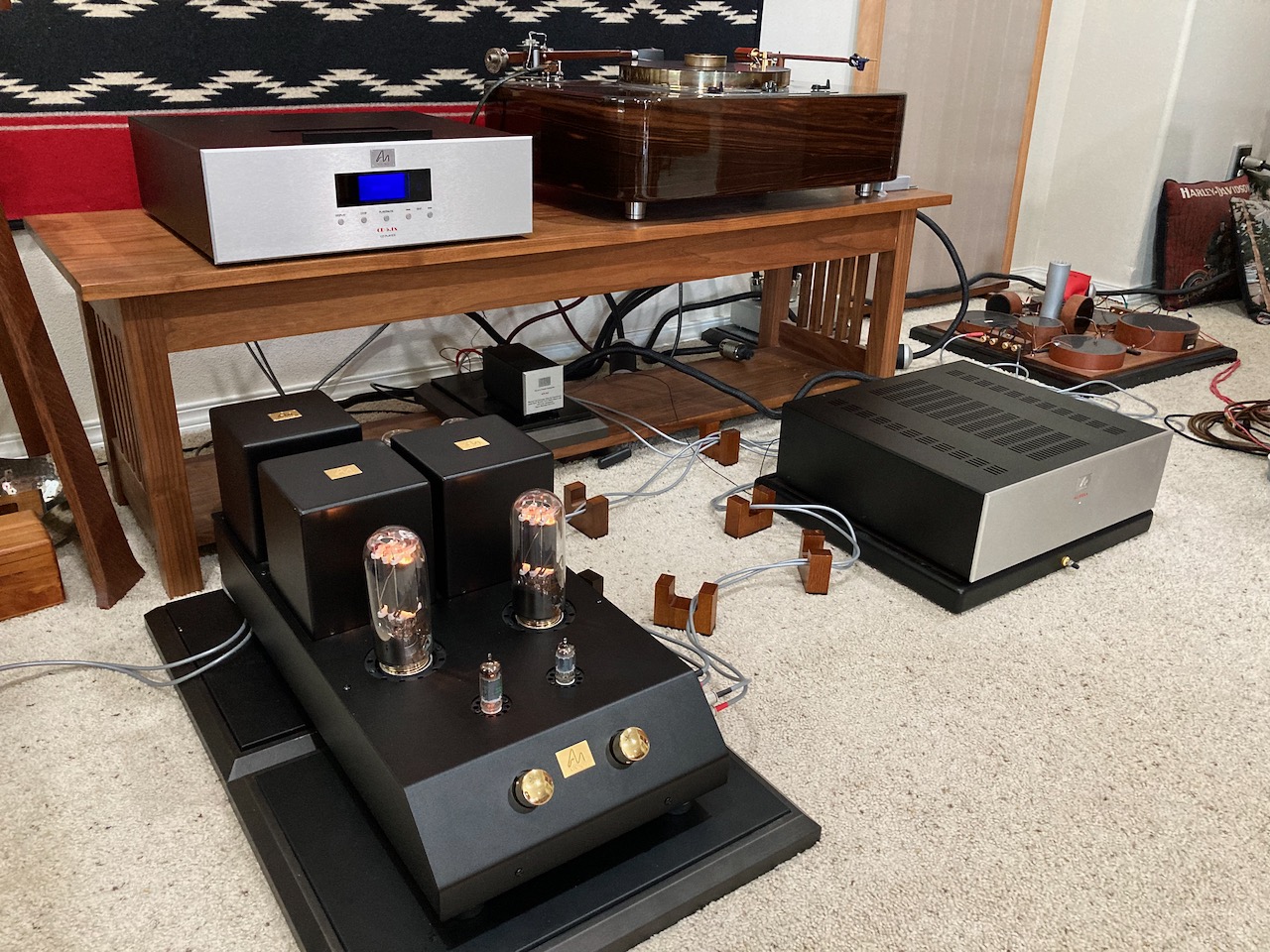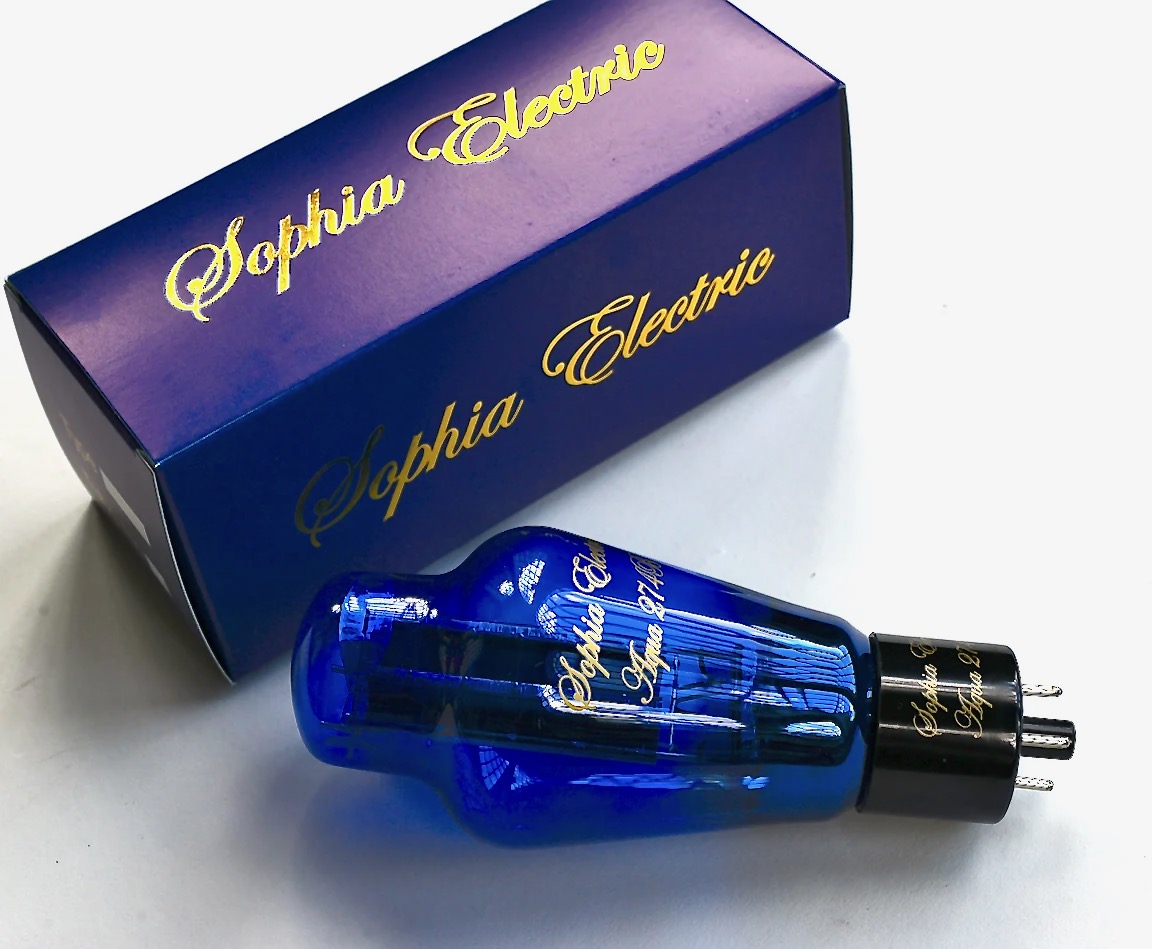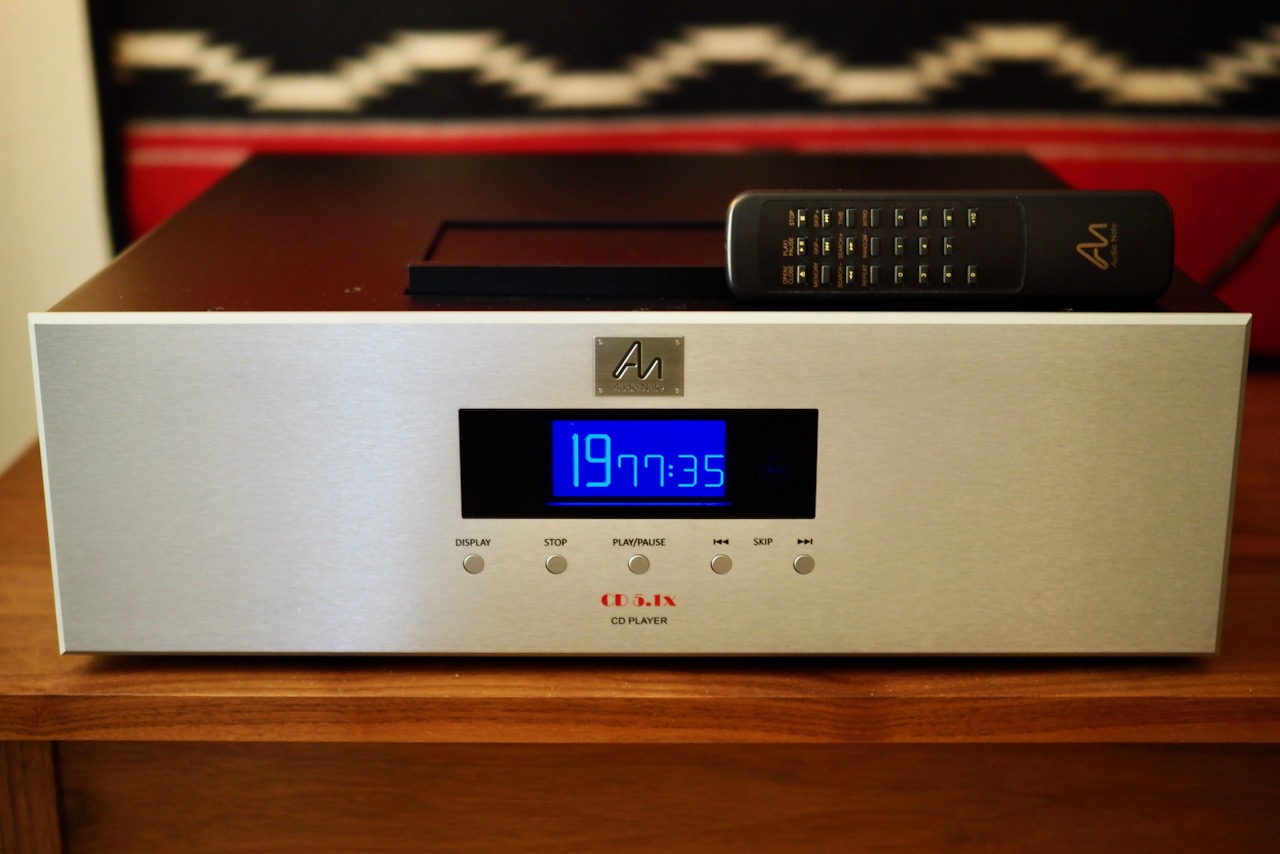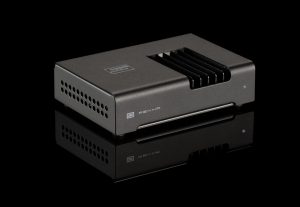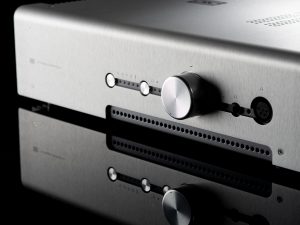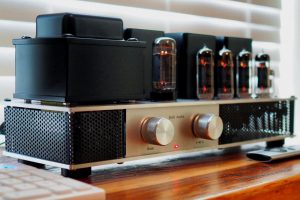Listening impressions
When I first heard the original Leben CS-600 with my Harbeth Super HL5 loudspeakers way back when, a decade or so ago now, I was really impressed with that combination's superb balance of musicality and sonics.
In fact, I was so smitten by the level of musical enjoyment I experienced from that combination I ended up replacing my main music system of Avantgarde Duo loudspeakers powered by single ended triode (SET) amplification with the Leben & Harbeth combination.
My experience with the sheer musicality of that Leben & Harbeth combo set me on a long odyssey of considering the role of musicality in listening to recorded music reproduced in a home setting, and why some hifi equipment performs so much better in terms of musicality than others (more on that HERE).
Well, the Harbeth's are now long gone, and have been replaced by my vintage Altec A5 Voice of the Theatre loudspeakers, which are even more musically convincing than the Harbeth's, and they are absolutely otherworldly and totally immersive for watching movies.
The Leben CS-600 continued its run of musicality with the vintage A5's, and if anything, my Leben CS-600 sounded better than ever with the A5's.
Then the new Leben CS-600X arrived for review, so I replaced my CS-600 with it (above).
Since its arrival, I've been listening to the CS-600X with a wide variety of music on LP, films on Blu-ray & DVD discs, video streamed from my Apple TV, and an occasional CD played on my OPPO UDP-203 Blu-ray player.
Here's my take on the sound of the original CS-600 versus the new CS-600X: The new Leben CS-600X sounds a little warmer, a little more musically natural, emphasizes beat and tempo a little more, and sounds more like a "classic" tube amplifier.
My old CS-600 sounds a little more articulate, there's a little more "sparkle" in the upper midrange, it is a bit leaner sounding, more transparent, and it captures the sense of acoustic space of a recording venue a little more vividly.
Personally, while I love the performance of my CS-600, I like the performance of the new CS-600X even better, for its additional warmth, and its increased level of musicality.
So, the new Leben CS-600X sounds more like a classic tube amplifier, and the old CS-600 sounds more like a more modern and neutral tube amplifier.
In spite of the minimal circuit changes made to the original CS-600 to create the new CS-600X, they do sound noticeably different.
Like me, you may like the difference in musicality & sonics of the new CS-600X, but I suppose there are those out there that want to make their CS-600X sound more like the old CS-600, or vice versa, and that's perfectly ok.
In fact, one of the greatest strengths that the CS-600 and CS-600X share is that they offer their owners incredible flexibility in voicing the amplifier to best match their personal tastes, room acoustics, and associated equipment.
An owner of a Leben CS-600 or CS-600X is likely going to have an easier time getting the voicing dialed into their personal tastes than just about any other amplification device around.
First, there's an impedance switch for selecting the transformer taps that best match your loudspeaker's impedance: 4 Ohm, 6 Ohm, 8 Ohm, and 16 Ohm (perfect for my vintage Altec loudspeakers!). I might also point out that it's OK to try impedance settings that are different from your loudspeakers' impedance, so you can find out if you like the way it sounds with a different setting.
Secondly, there's a bass boost switch that allows one to dial in the bass response for a given pair of loudspeakers, room, or even a single album being listened to. It makes it easy to get a desirable bass-to-treble balance while dealing with a variety of system, room, and album variables.
With my A5's, I typically leave the bass boost switch at the 0dB of boost setting, but there's times when + 3dB sounds better, and with my vintage Altec 832A Corona loudspeakers, either + 3dB or +5dB can sound really nice depending on the source material. It's nice to have the bass boost option.
Thirdly, the inclusion of cathode resistors & plate voltage switches allows the owner to optimize the CS-600X for a variety of vacuum tubes from the EL34 and 6L6GC families, which gives a broad tonal palette so that you can voice the sound of the Leben CS-600X exactly to your tastes, and it can be entertaining as well, just for some tube-swapping fun.
You can also change tube brands in the first stage of amplification, or try some NOS tubes, to tailor the sound even more.
I've been listening to both the premium long-life Sophia Electric KT88-ST and EL34-ST vacuum tubes in the CS-600X, along with the stock tubes.
The stock tubes sound good in the CS-600X, but both the Sophia Electric KT88-ST and EL34-ST vacuum tubes offer a significant improvement in performance over the stock tubes, which I'll be discussing in depth in a future feature review of the Sophia Electric vacuum tubes here at Positive Feedback.
However, in this review I'll be focusing solely on the performance of the CS-600X with the stock tube set.
Fourth, and this is a bit more work that requires using a soldering iron, but you can change the coupling caps to fine tune the voicing of your CS-600 or CS-600X, which is another source of entertainment for those who enjoy doing a little bit of soldering.
For example, there's some Leben enthusiasts who have discovered an easy coupling capacitor swap for the CS-600X that is supposed to make it sound more like the original CS-600.
I can tell you from personal experience with other amplifiers, that varying both the value and type of the coupling capacitors makes a substantial difference in sound.
Generally speaking, larger uF values of coupling capacitors give a bit more warmth, color, and body in the midrange, and of course whether it is polypropylene or paper-in-oil makes a big difference too.
Personally, I usually tend to prefer the sound of paper-in-oil caps for their rich and natural sound quality.
I like the overall tone of the new CS-600X better than my CS-600, but depending on your tastes, you may prefer the original CS-600's more neutral tonal balance, and there's a quick & easy coupling capacitor mod that you can do to the new CS-600X to make it sound more transparent and nuanced like the original CS-600.
There are four coupling caps that connect the 12BH7A driver tubes to the EL34 (or other) output tubes, and the music signal goes directly through these capacitors, so their size and type has a lot of influence on the overall sound you hear from the amp.
The coupling cap mod recommended to me substitutes polypropylene film capacitors (above) made by ASC Capacitors (1.0 uF ASC X335) for the stock 1.5 uF film capacitors made by Harbor Electronics, which are used in the original CS-600 as well as the new CS-600X.
I am told that the combination of the smaller and higher quality coupling capacitors gives a more transparent, articulate, and more contemporary overall presentation, while the standard larger coupling capacitors giving a sweeter, warmer, and more classically "tube-like" presentation.
I'm always up for a little cap-swapping adventure, so I will explore this topic in the future, trying the 1.0 uF ASC capacitors, and perhaps a couple of difference PIO capacitors, and then report back. However, for now I like the way the new CS-600X sounds so much that I'm in no rush to install different coupling caps.
I'm also tempted to try replacing the stock 1.5 uF Harbor Electronics film capacitors in my original CS-600 with some quality PIO caps, which I suspect would make for a nice improvement, assuming they would fit in the space available.




